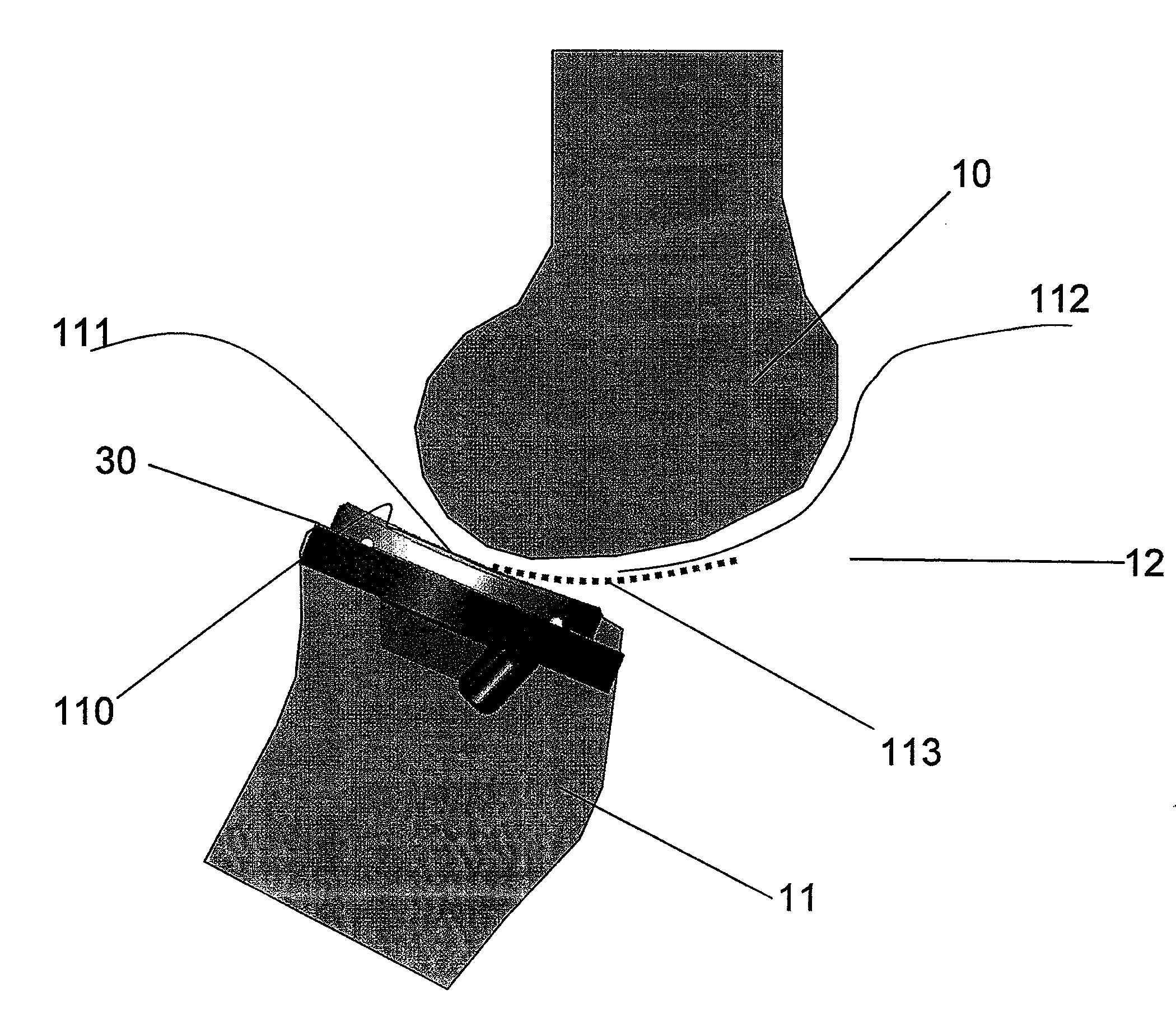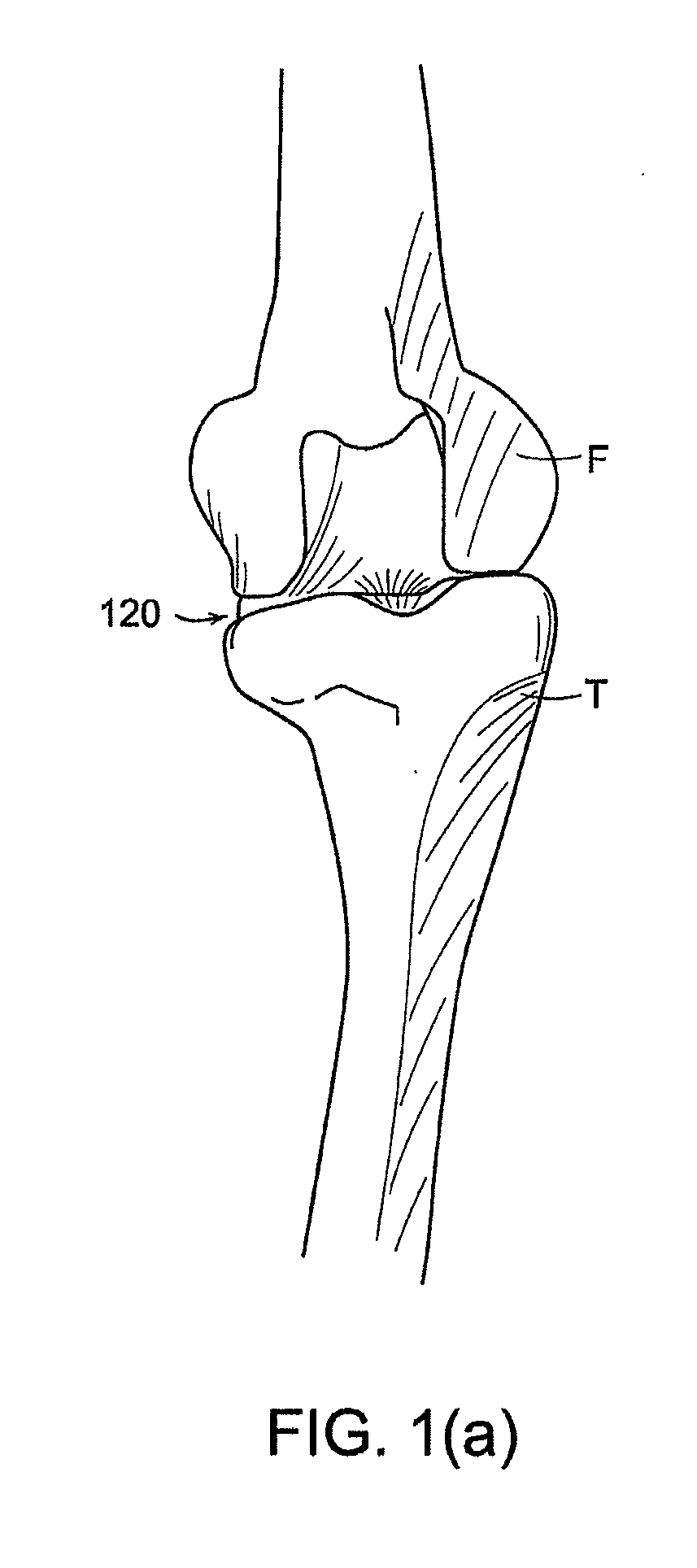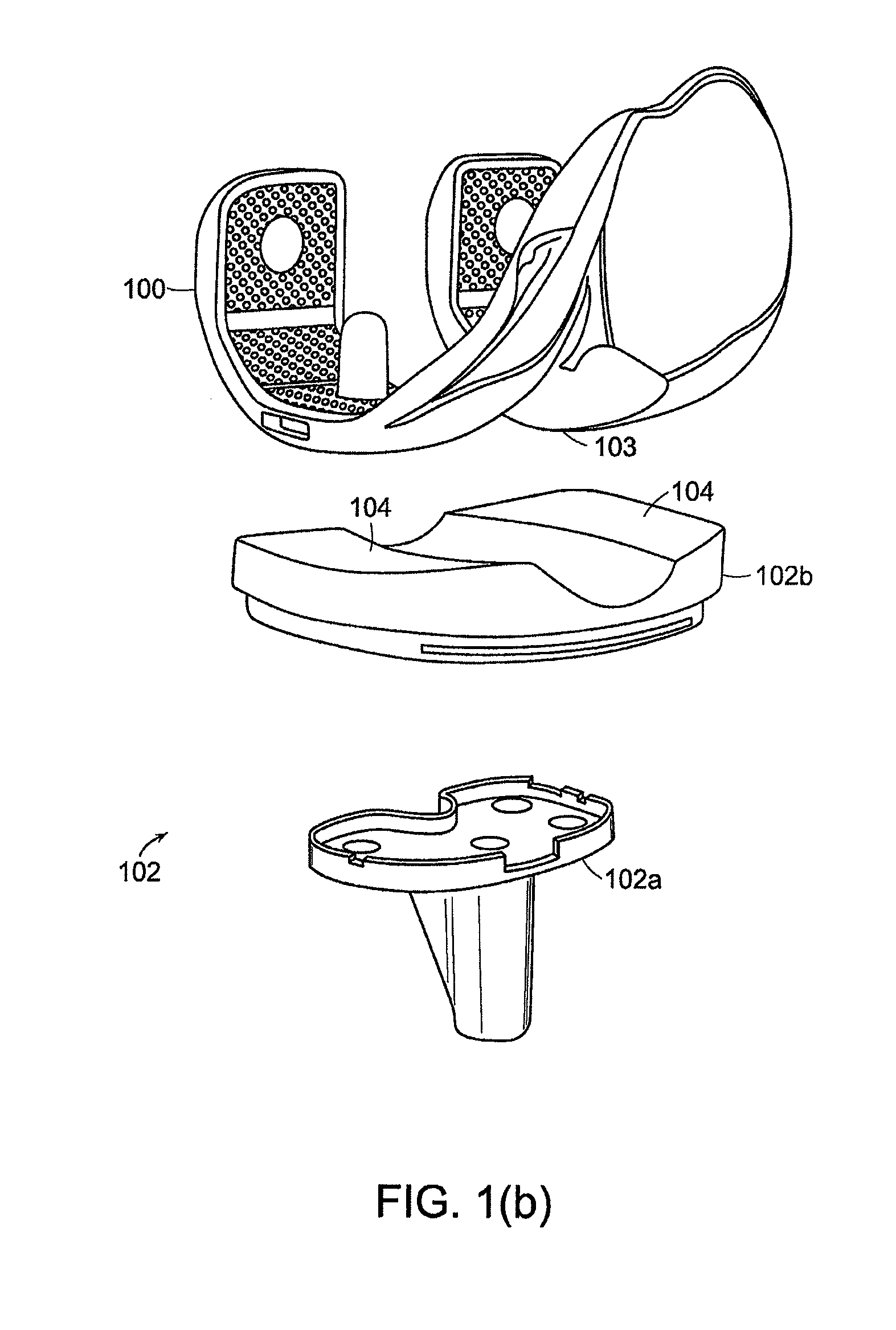Implant Planning Using Captured Joint Motion Information
a technology of motion information and implants, applied in the field of surgical computer systems, can solve the problems of reducing the surgeon's ability to view and access the anatomy of the joint, increasing the complexity of assessing the proper position of the implant and reshaping the bone, and long recovery time for the patien
- Summary
- Abstract
- Description
- Claims
- Application Information
AI Technical Summary
Benefits of technology
Problems solved by technology
Method used
Image
Examples
Embodiment Construction
[0041]Presently preferred embodiments are illustrated in the drawings. Although this specification refers primarily to unicondylar knee joint replacement surgery, it should be understood that the subject matter described herein is applicable to other joints in the body, such as, for example, a shoulder, elbow, wrist, spine, hip, or ankle and to any other orthopedic and / or musculoskeletal implant, including implants of conventional materials and more exotic implants, such as orthobiologics, drug delivery implants, and cell delivery implants.
Representation of a Joint and Implant Models
[0042]FIG. 1(a) shows a front view of a tibia T (e.g., a first bone) and a femur F (e.g., a second bone) of a joint 120 without any implant and with the joint 120 at full extension (i.e., a flexion angle θ of 0 degrees). Position trackers (e.g., such as those shown in FIG. 15 and described in more detail below) that are detectable by a detection device, such as an optical camera, are affixed to the femur...
PUM
 Login to View More
Login to View More Abstract
Description
Claims
Application Information
 Login to View More
Login to View More - Generate Ideas
- Intellectual Property
- Life Sciences
- Materials
- Tech Scout
- Unparalleled Data Quality
- Higher Quality Content
- 60% Fewer Hallucinations
Browse by: Latest US Patents, China's latest patents, Technical Efficacy Thesaurus, Application Domain, Technology Topic, Popular Technical Reports.
© 2025 PatSnap. All rights reserved.Legal|Privacy policy|Modern Slavery Act Transparency Statement|Sitemap|About US| Contact US: help@patsnap.com



